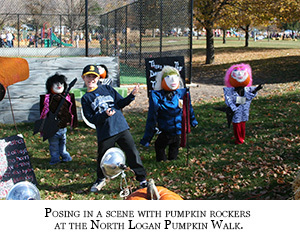Howdy everyone! Welcome to my first blog post about hands on learning. Jump over and read my bio for more information about me and why I'm writing about this special learning tool.
I thought I'd start you out with a bang for my first few blog post by giving you a semester of science. When my daughter, Jillian (now 6), started showing an interest in science at an early age, I was kind of worried I would not be able to meet her needs. I may have even been dreading it a little bit. I'm sure you can relate, even if it's not science that gave you a scare, maybe it was math (for me it's only math now). I believe my past science teachers would all be surprised to learn this about adult Bethany: I am totally in love with science! I'm not sure what is different now then when I was in school but I am so interested in the topics I am teaching. Doesn't it make school so much more fun to teach if your learning, too? Anyway....
The topic of the Human Body has been fascinating children since the beginning of time. Ok, I don't have proof that's true but I wouldn't be surprised to one day learn that Adam and Eve taught their kids about guts and body functions. Surely kids way back when asked their parents where poop comes from. Don't be squeamish, people. We all wanted to know at some point. For some reason kids really want to know what is going on under their skin. The great thing is, I have some very cool experiments and ideas you can do at home to teach your kids all about the human body. Let's start simple.
If you look in the back of the book: The Magic School Bus: Inside the Human Body, you will find the inspiration for my human body chart.
Let me tell you how I made the coolest chart you've ever seen (hey, I know you were thinking it). This background is a roll of mailing paper (found at Dollar Tree and Walmart near the mailing envelopes section). I rolled the paper out and had J lay on it then cut it to size across the top. I trace my kids on the trampoline with side walk chalk a few times a month so it was simple enough to trace around her using a pencil. I did have to erase or else her right leg would have been about as thick a ruler but that's why I used pencil first, right? After corrections were completed, I used a black sharpie to trace the pencil markings. Being a bit of a perfectionist I turned the paper over and followed again with the sharpie (it showed through from the back) so you couldn't see the eraser marks. I did this with all the organs and such which I'll admit did take all the artistic abilities I claim to have and also doubled the project time. It may not be worth the effort for you, do whatever you feel comfortable with. As I was working on my chart I turned on Netflix and let the kids watch The Magic School Bus: Inside the Human Body. Yes, they did get to watch it twice since I chose the hard perfectionist way. Option B: If you are already saying to yourself: No way could I draw this! Never fear you can simply do a google search to print out organs and glue them on.
What makes this hands on learning? As we learned about each topic we colored them in. That's it. Simple. You see, J loves to color and I've realized if I give her something to color as we are learning she does a much better job at paying attention. It's true, give it a try! It works great with History.
You will notice in the next picture I added the bladder since J specifically asked about it. Customize it all you want. You may also notice that I got a better camera since starting my human body chart (yahoo!!). Perhaps you spot the brain on the shelf as well. We will get into that project too in the coming week(s) as we get more into experiments and such. So, here it is, the finished project . . .
Let me know if you take this on! I'd love to see your super cool human body charts as well. Stay tuned for next week's 'Semester of Science (Human Body) Part 2'.
"God did not put us on earth to fail but to succeed gloriously," - Richard G. Scott.























